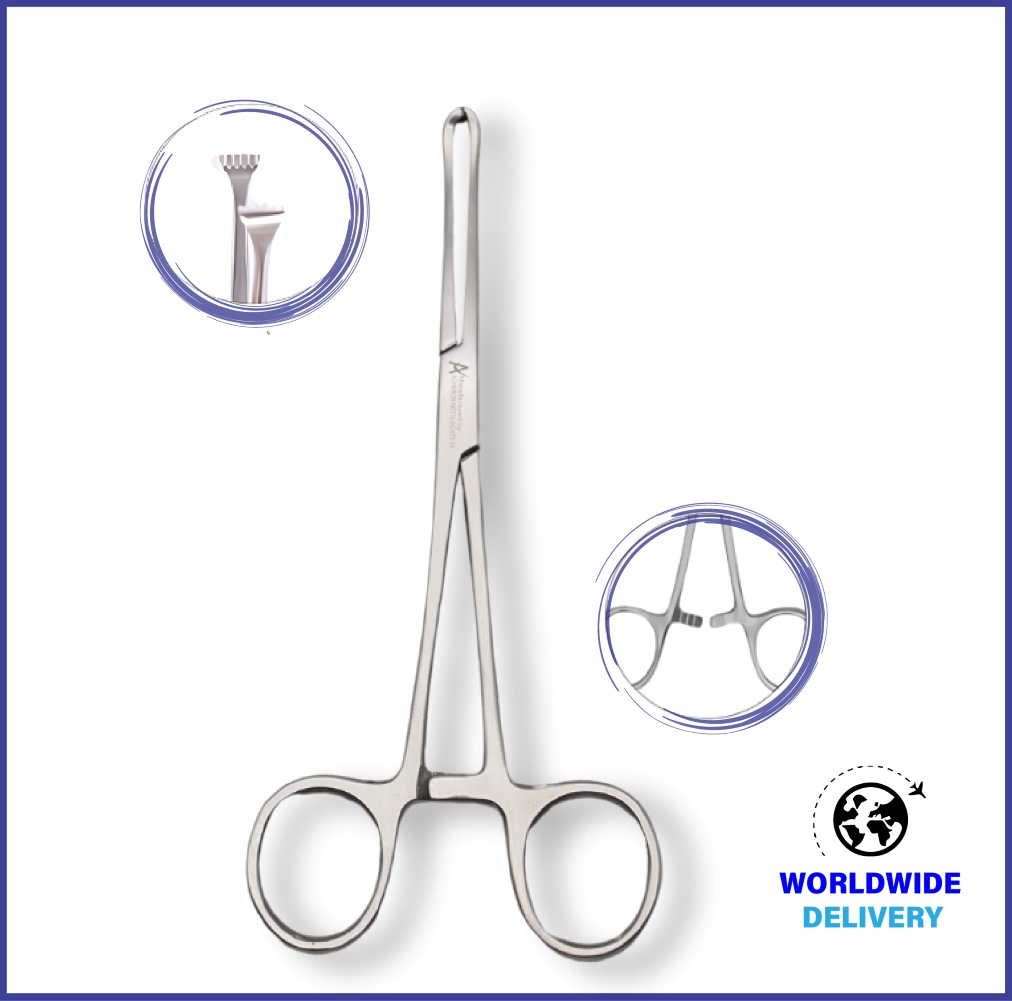History of forceps
Forceps were designed organically in the era to help deliver a baby when many women died due to childbirth. The word forceps is derived from Latin “forca” which means to grip or grab an object. The innovation in forceps started from the 16th to 17th century by the Chamberlen family. During the 19th century, there was a huge advancement in the manufacturing of instruments by the British that were made in stainless steel and carbon steel material. More complex and different designs emerged in the 19th century which led to the development of a vast range of forceps used for multiple purposes.
Design
Tissue forceps come in different varieties having multiple designs to cater to different surgical scenarios. Some tissue forceps are tweezer-like in shape that is used for grasping, holding, and manipulating tissues. These types of forceps have a spring mechanism that provides smooth closure movements. The other type of tissue forceps are scissors-like, finger ring tools that mostly comprise a ratchet locking mechanism for self-locking the jaws. This type of tissue forceps generally has longer shafts to reach deeper surgical sites. There is a vast range of designs available for tissue forceps both in toothed and non-toothed versions. Some are used for grasping smaller tissues while some are useful for handling large tissues.
Variations
Tissue forceps are available in different sizes and shapes and are chosen based on surgical requirements. They are generally available in two forms:
Non-toothed- ideally used for traction and fine handling of tissues during dissection
Toothed/serrated- used greatly for holding dense tissues, especially in skin closures.
Specifications
· Different sizes and designs are available in toothed and non-toothed versions
· The sizes range from 7 cm to 15.5 cm
· They have a ratchet locking mechanism that allows a secure grip over the tissues
· The collection available is vast and can be available in straight and curved variations
Types
Some important types used during surgeries are as follows:
Allis Tissue forceps- These forceps come with broad tips and are used mainly for connective tissues and fascial planes and are extremely traumatic. The surgical control is improved due to the short blades-to-shank ratio. Also, it prevents piercing injuries to the tissues as these forceps comes with blunt tips. These forceps come in different variations having 4 by 5 teeth and 5 by 6 teeth to suit multiple surgical requirements. The handling of tissues becomes easy as the teeth hook onto the tissues providing a secure anchor to the surgeons.
Babcock- These are non-perforating, finger ring forceps. These forceps are used to grasp delicate tissues. they are primarily useful in intestinal and laparotomy procedures. Due to wider and round grasping surfaces, they are comparatively less traumatic as compared to Allis forceps despite having similar designs. This tool comprises longitudinal striations that render them less traumatic and are mainly used in the area of intestines
Doyen- These are referred to as intestinal forceps as they are used majorly in intestinal and gastric surgeries and comprise thin, bowed, and long jaws covered with longitudinal serrations in general. This tool has shorter shanks and long jaws that make them unique. They also have fine longitudinal serrations on the entire length of their gripping surface.
Adson- This is one of the most widely used surgical tools by surgeons in every area for grasping, holding, and manipulating various dressings. This tool comprises a pair of tapered jaws to grasp smaller dressings easily. This device has a flat handle with a spring action that provides smooth closure movements.
Mixter- comprise of blunt tips that are used for blunt dissections or dissecting vessels. This type holds prime importance in thoracic surgeries, cardiovascular surgeries, biliary duct, and gall bladder surgery. This instrument features a pair of curved, tapered jaws that assists in transverse the narrower anatomical sites.
Material
Tissue forceps are made up of superior-quality German stainless steel material. The material is autoclavable, robust, corrosion free, and rust-free. The fine material increases the longevity of the instrument.
Conclusion
Tissue forceps are the need in every surgical tool kit and operating room. These instruments are used in plenty of surgical procedures including cardiovascular, obstetric, orthopedic dental, neurosurgery, intestinal and other surgeries. Tissue forceps are available in plenty of variations having different sizes and shapes that are chosen according to one's surgical requirements. Acheron instruments provide premium quality products to their customers at the best prices. Our instruments have fine craftsmanship and are used for a great time. You can check our wide array of tissue forceps on our website. All our products are manufactured in high-grade German stainless steel material that enhances the durability of our tools and increases their life span.











-1728555158.jpg)
